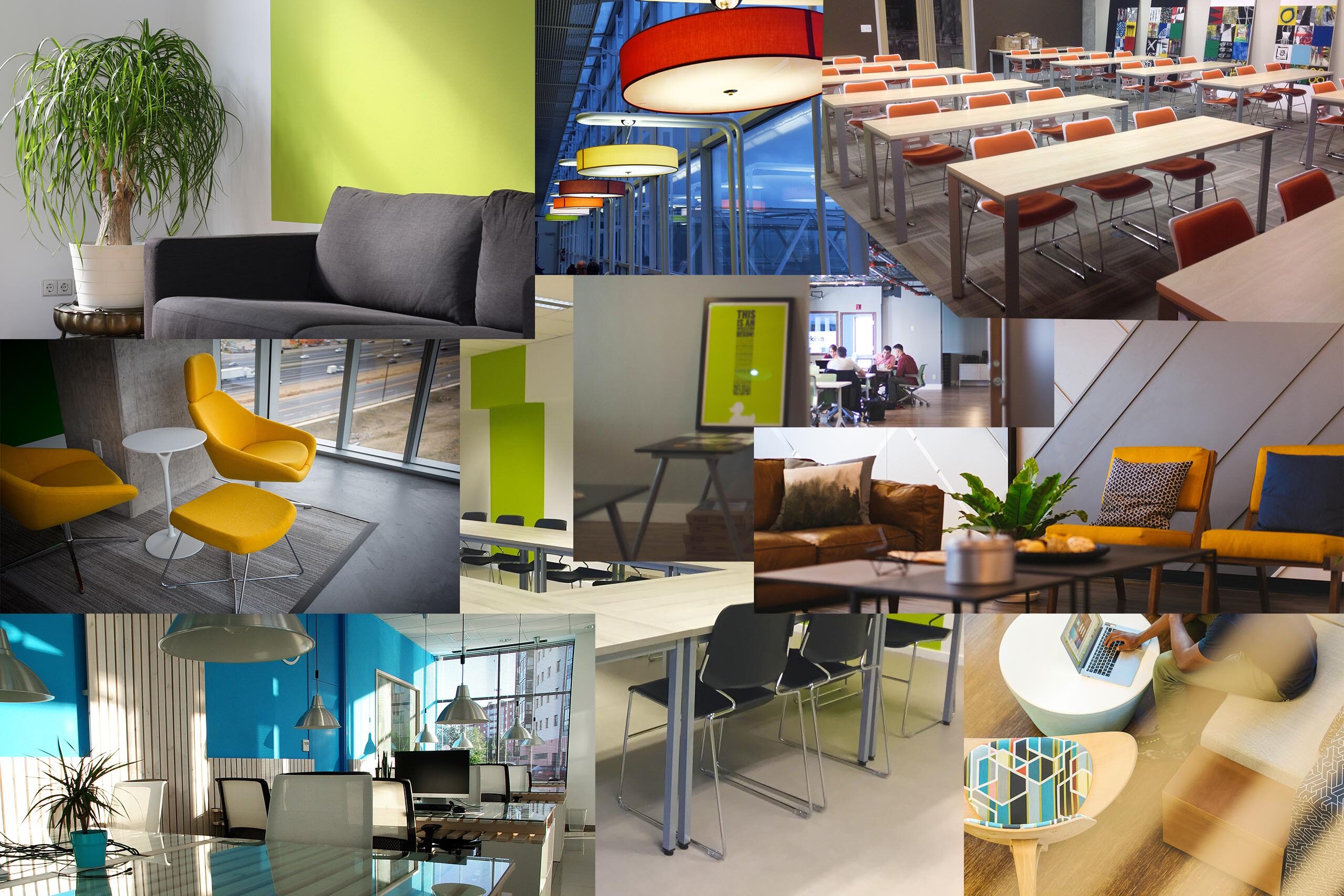Atmosphere at work –
One environment makes people anxious and competitive, while another brims with sociability and fosters cooperation.
Aesthetics change people’s attitudes and behavior from the outside in.
Ingrid Fetell Lee
According to the World Green Building Council, typical business operating expenses and staff costs account for 90% of total operating expenses, with rent and energy accounting for 9% and 1%, respectively. Numerous studies have shown significant increases in productivity with human-centric designs.
Without diving into the notion of human-centric designs that spans across a vast horizon of biophysical interactions between us and our environment, we all know from personal experience that the atmosphere or ambiance of the environment we spend time in, fundamentally impacts how we feel and function in that space.
So, why is that most of our offices are merely lifeless, uninspiring containers of furniture, computers and people?
Atmosphere is the experience of the space. It is orchestrated by the aggregate of present aesthetics. Designers consider aesthetics the properties that define the way objects look and feel and give rise to emotions and feelings.
The key components of our toolset:
With relatively minor but astute additions and alterations this experience can be effectively improved. These pictures reveal some of the strategies that can be applied to control and enhance certain aesthetics.

Energy
Strategically positioned bright color patches can significantly increase the radiated energy of the place. Color additions might incorporate painted wall sections, accent furniture, upholstery insets, plants or lights.
The usage of colors require restrain and discipline, though. While modest application can drastically improve the dullest place, excessive use might trigger restlessness.
Both lighting and color create focal points, the applications must work in unison.

Freedom
An alliance of proportions, placement, lights and colors create the sense of freedom in this space.
The dominant irregular polygon shape cove lighting evoke open sky feeling, while a row of downlights helps to avoid the cave effect as luminous intensity rapidly diminishes away from the large windows.
The feel of openness is maintained at floor level by airily spaced, small footprint furniture.
Wood veneer, pineapple patterned wood tables, and natural colors create a natural sense which is an inherent component of the aesthetic of freedom.

Play & Renewal
Play has a fundamental role in social interactions, trust and creativity even in adulthood.
Ask a neurologist and they will tell you that nothing lights up the brain as play. Play is dictated by a state of mind, rather than a type of activity. Modern society distanced work from play, but when the brain is deprived of play, it suffers.
As Dr. Stuart Brown – the psychologist known for his research on the effect and importance of play in our lives – notes, work and play are not antithetical. “The opposite of play is not work. It’s depression.”
No need to be afraid of incorporating play cues in the design. It enhances the quality of the environment without jeopardizing the seriousness of the business.
Curvilinear elements are also associated with the cyclical nature of renewal. A new day, a new spring, newly sprouting plants invoke our inexhaustible capacity to recoup and tackle new challenges.